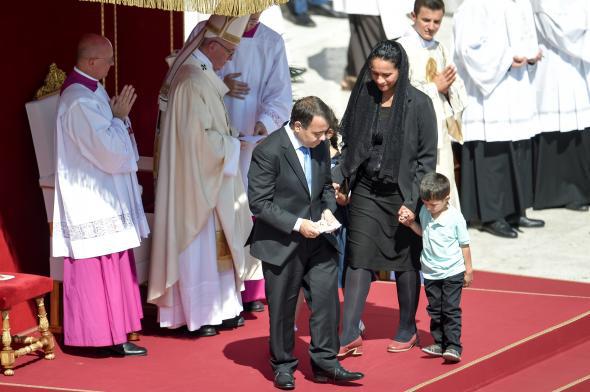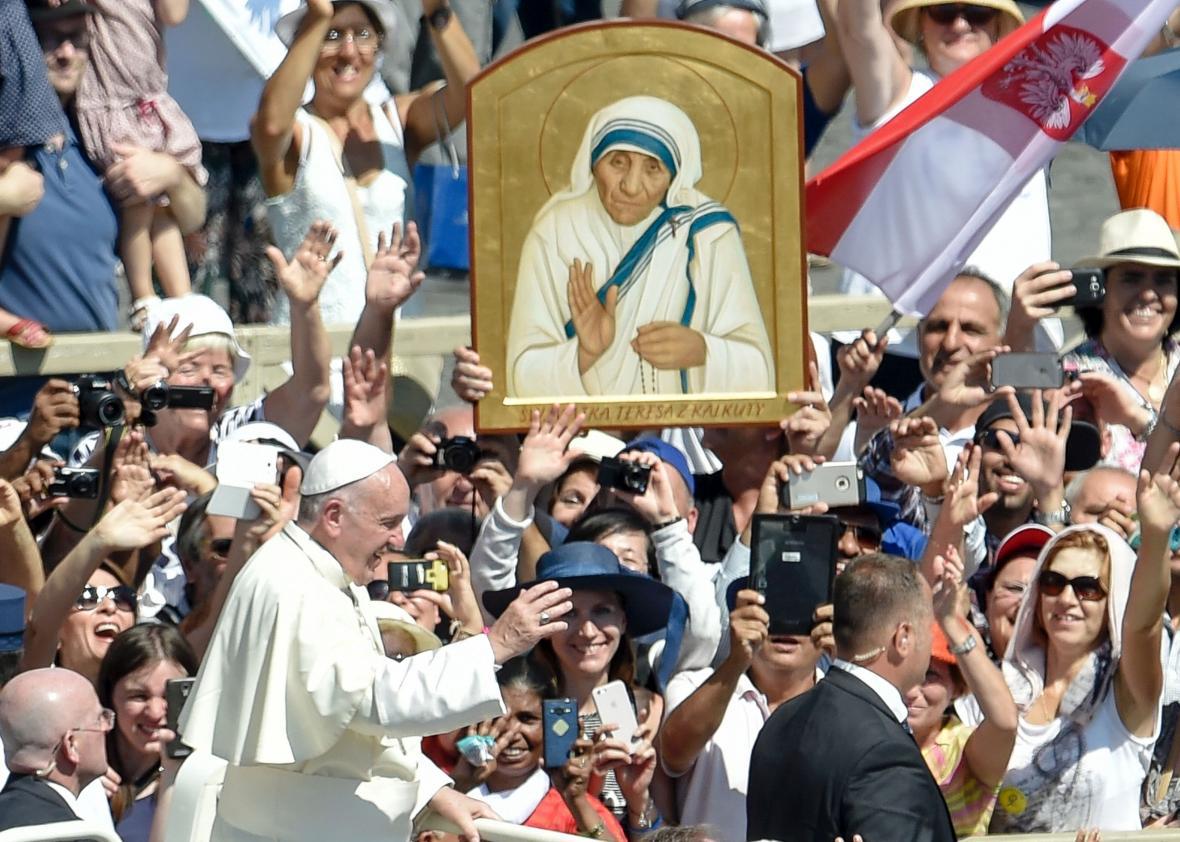It’s official. Mother Teresa of Calcutta is now a saint of the Roman Catholic Church, Pope Francis declared on Sunday morning, ending a fast-track canonization process a mere 19 years after her death. Large crowds of pilgrims gathered in St. Peter’s Square in Vatican City to hear the pope canonize the Albanian-born nun who was popularly known as the “saint of the gutters” and worked with the poorest members of society in an Indian city that is now called Kolkata. “I think, perhaps, we may have some difficulty in calling her St. Teresa: Her holiness is so near to us, so tender and so fruitful, that we continue to spontaneously call her Mother Teresa,” the pope said in unscripted remarks during his homily.
Around 120,000 people took part in the ceremony, less than half of the 300,000 who were present for her beatification in 2003. After the canonization service, nuns from Mother Teresa’s order served pizza to 1,500 homeless people who were bussed in from across Italy.

Vincenzo Pinto/AFP/Getty Images
Francis praised St. Teresa as a “dispenser of divine mercy” and also someone who “made her voice heard before the powers of the world, so that they might recognize their guilt for the crimes of poverty they themselves created.” He repeated that line again, emphasizing a point that he has made numerous times as pope: “The crimes of poverty they themselves created.”
Declaring a saint so soon after her death is extremely unusual for the Catholic Church that usually takes decades, if not centuries, in the process. But Pope John Paul II agreed to demands by her devotees to speed up the process in 1999. John Paul II beatified her in 2003 after a 30-year-old woman said she was cured of a stomach tumor when she prayed to Mother Teresa. And then Francis recognized a second miracle attributed to her, claiming a man in Brazil stricken with multiple brain tumors was unexpectedly cured after family members payed to Mother Teresa. That Brazilian man was present for the ceremony. “I am very grateful for this miracle,” said Marcilio Haddad Andrin.

Andreas Solaro/AFP/Getty Images
Mother Teresa also had plenty of skeptics and critics, most famously Christopher Hitchens, who called her a “fanatic” and a “fraud.” Others criticized what they said were low standards of hygiene in hospitals run by her sisterhood, and say she had no problem accepting money from dictators. Feminists and aid organizations were never fans of how Mother Teresa campaigned against abortion and birth control. And some say she failed to use her fame to really get to the root of the problem and help the poor get out of poverty. Plus, there are plenty of people who have debunked the miracles credited to Mother Teresa.
Her defenders have, of course, pushed back against the critics for years, saying they need to live their lives like Mother Teresa before criticizing her work. And for many of those gathered in St. Peter’s Square on Sunday, the canonization was nothing short of a formality, because they already considered her a saint.

Reuters/Stefano Rellandini
